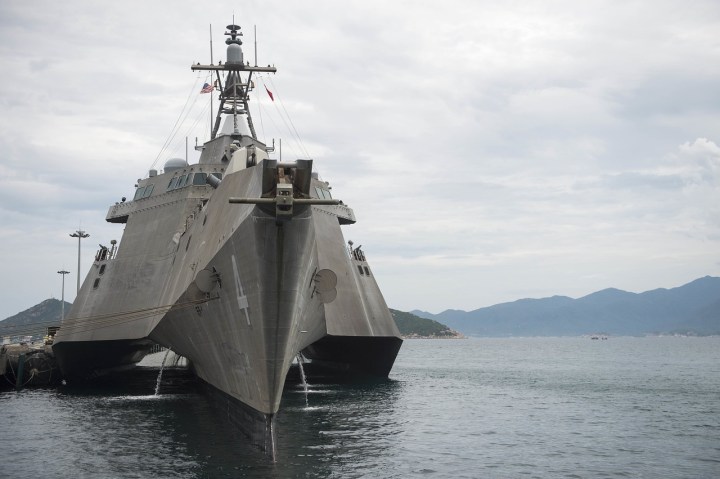
To say that the LCS program has faced some stormy waters would be an understatement. It’s been plagued with technical glitches and problems since before the first ship was launched in 2008. The ships were years late and way over budget. The LCS mine detector couldn’t even detect mines.
More than half of the LCS fleet deployed since 2015 – five of eight ships – have experienced mechanical breakdowns that have sidelined the ships for months. The Navy has recently opted to “reboot” the training and testing regimens of the entire LCS fleet. The future of the program is uncertain, with some ships being canceled and others reconfigured as training ships.
Originally, the Navy had planned for three crews to rotate through two ships, with longer deployments for the ships and fresh crews. The new deployment uses two crews — one deployed and one onshore training for each ship, similar to how the Navy deploys its “blue” and “gold” submarine crews.
As part of its operational “pause” in the training and testing of the new ships, the Navy has begun to rely even more on the virtual simulators of the LCS Training Facility.
Captain Ronald W. Toland Jr.. commander of the Fleet Anti-Submarine Warfare Training Center, calls it “LCS University” and cites aviation simulators and submarine schools as inspirations for the program. “We’re even learning things about the LCS ships on the simulators before we see it at sea,” he said.
The training program is so successful that a second campus is planned for Mayport, Florida, the East coast base for the LCS program. Captain Jordy Harrison is the former commander of the guided-missile destroyer Halsey. “I want crews to make their mistakes in the classroom and the simulator here before they come aboard the ships to prove their capabilities,” he said. “I was a healthy pessimist of this program before I came to the squadron, too, but they’ve made changes. It’s paying off.”


